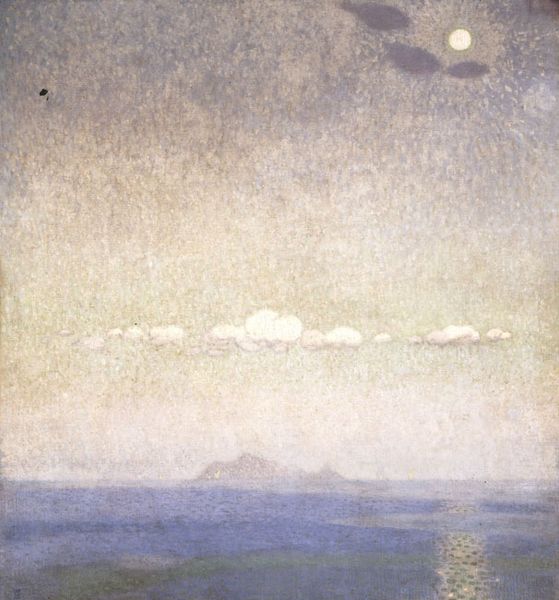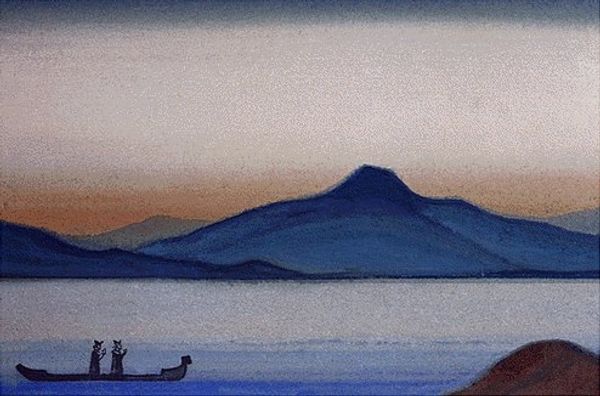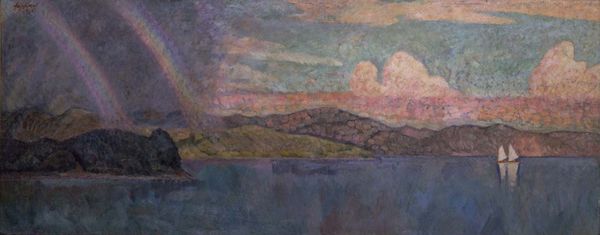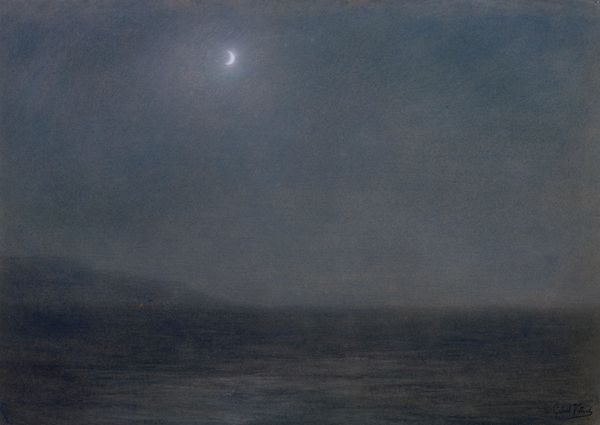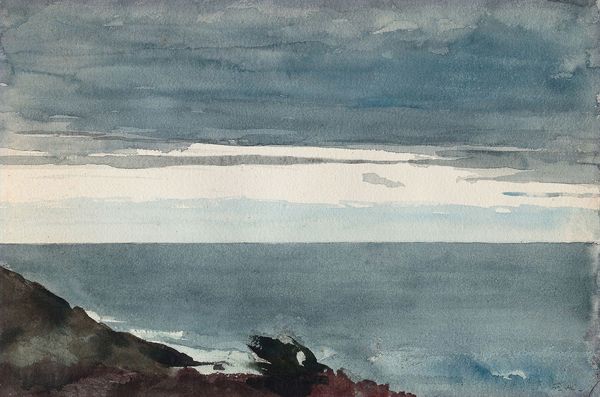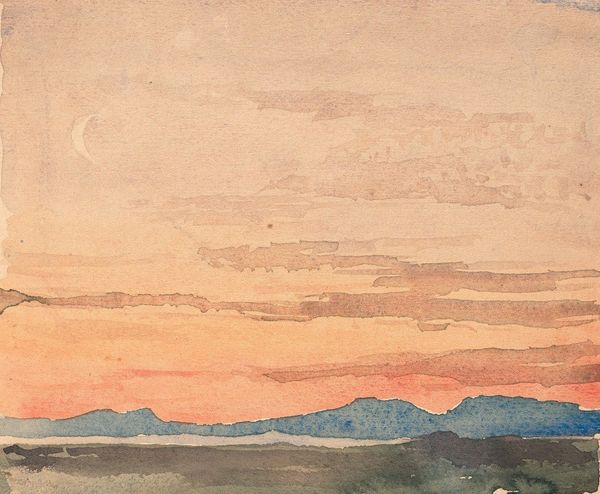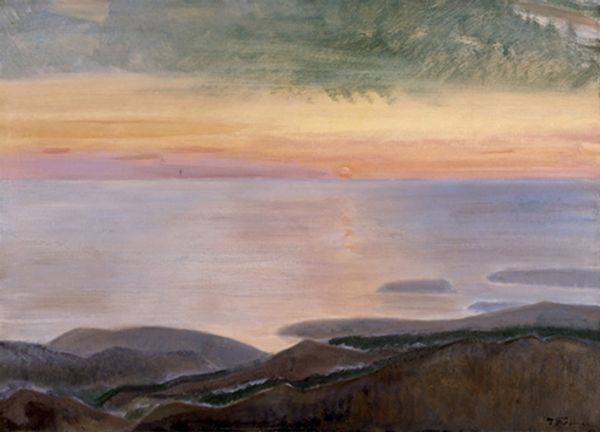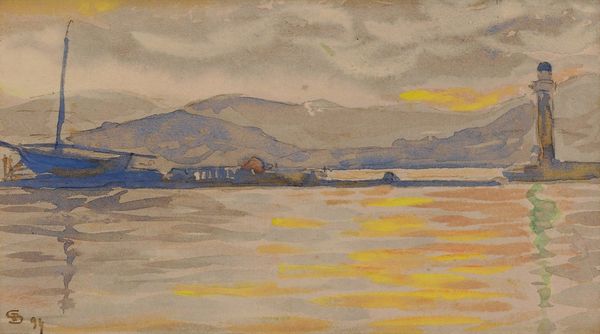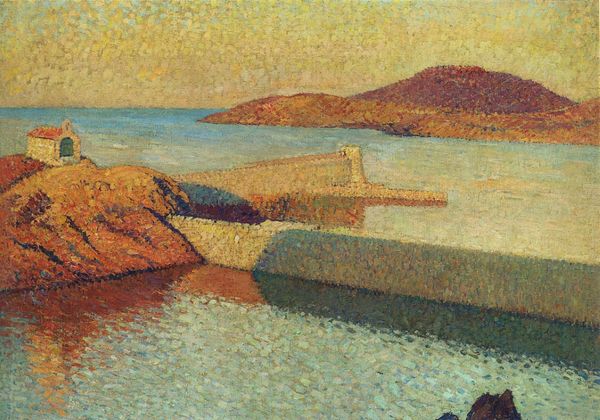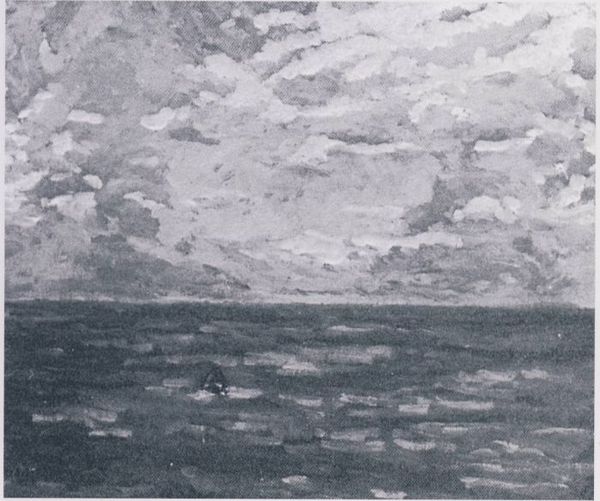
Copyright: Public domain
Curator: Theo van Rysselberghe painted this striking "Channel Coast" in 1892. Look closely; you'll notice it’s oil on canvas. Editor: At first glance, the seascape appears muted, almost metallic, yet calming in its subdued tones and textures. I am drawn to the seemingly endless expansion. Curator: Absolutely, and that stillness emerges from Van Rysselberghe’s masterful technique. It’s neo-impressionist; pointillist, even. The painting is made up of countless tiny dabs of paint, a deliberate choice that reflects the labor-intensive process. The commitment to materials mirrors the artist's social milieu, where artisanal skills were both celebrated and undergoing industrial disruption. Editor: Yes, but consider what that specific choice of fragmented light conveys. Notice how it reflects on the water’s surface, how it interacts with the silhouette of the distant landmass. The image suggests a meeting place between the tangible world and the elusive quality of memory. The sky, too, is particularly symbolic, echoing the emotional state that such maritime scenes held, with a visual reminder of mortality, and our relation to such large-scale natural phenomenon. Curator: I can agree with that. What is also key to note, and possibly related to your interpretation, is the socio-economic element embedded in seascape paintings. Van Rysselberghe lived and worked within a society experiencing maritime trade, the rise of port cities, and naval power. The seascape encapsulates a very specific engagement with these globalized changes and social structures, showing us more than simple aesthetics. Editor: Indeed. Thinking more broadly, it also suggests that such visuals also speak to something primordial and essential: the lure of the sea, our fragile position within nature's grandeur. That sense of being grounded through symbolism creates an undeniable pull. Curator: Ultimately, in exploring "Channel Coast," it’s imperative that we recognize that aesthetic effect is born out of a specific set of production methods. Editor: I concur. Examining the imagery through an art-historical lens, its long and continuing life in our collective memory offers invaluable insights.
Comments
No comments
Be the first to comment and join the conversation on the ultimate creative platform.
